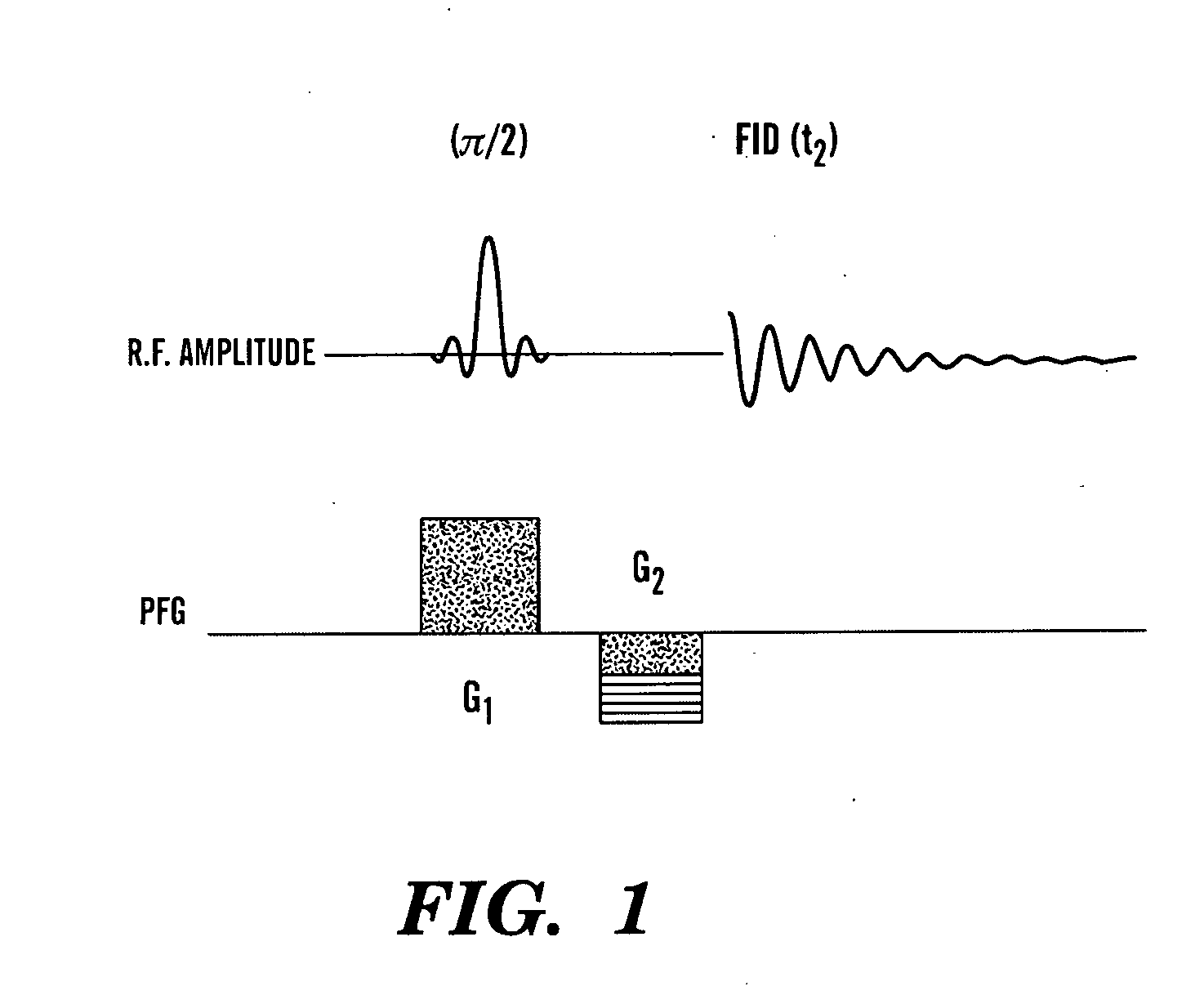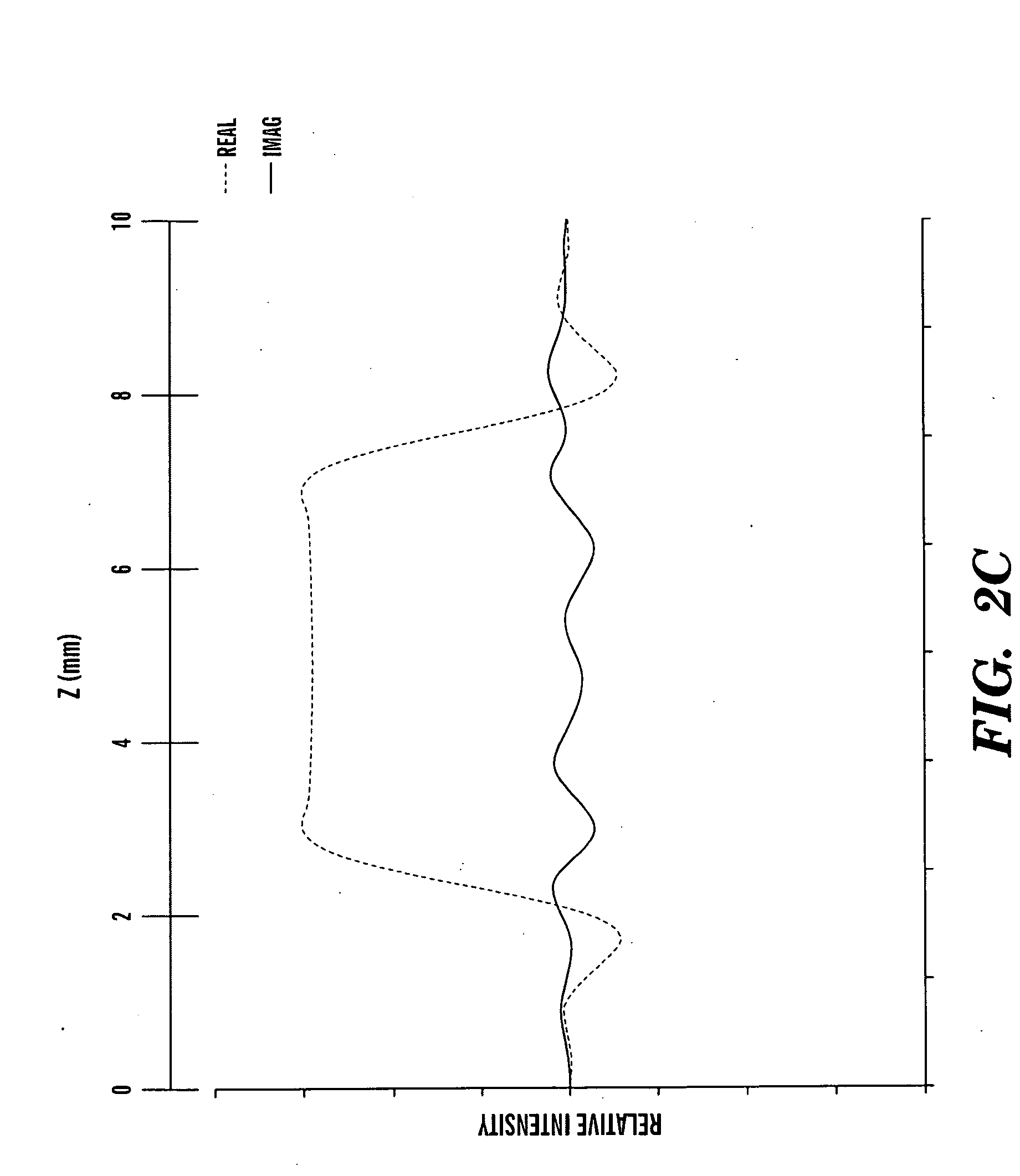Simultaneously cycled nmr spectroscopy
- Summary
- Abstract
- Description
- Claims
- Application Information
AI Technical Summary
Benefits of technology
Problems solved by technology
Method used
Image
Examples
example 1
Simultaneously Cycled (SC) 2D [1H,1H]-E.COSY
[0044]The radiofrequency pulse sequence of 2D [1H,1H]-COSY (Ernst et al., Principles of Nuclear Magnetic Resonance in One and Two Dimensions, Oxford Univ. Press: Oxford (1987), which is hereby incorporated by reference in its entirety) includes two π / 2 flip-angle pulses separated by the indirect evolution period t1. To avoid dispersive diagonal peaks which may occlude nearby cross-peaks, this pulse sequence is routinely expanded by a third π / 2 radiofrequency pulse right before the start of signal detection. This enables implementation of DQF or TQF COSY (Ernst et al., Principles of Nuclear Magnetic Resonance in One and Two Dimensions, Oxford Univ. Press: Oxford (1987), which is hereby incorporated by reference in its entirety). E.COSY aims at simplifying the COSY cross-peak fine structure by selecting only cross peak components representing ‘connected transitions’ (Ernst et al., Principles of Nuclear Magnetic Resonance in One and Two Dimen...
example 2
Simultaneously Flip-Angle Cycled (SFC) E.COSY
[0049]For SFC E.COSY (FIG. 4A), both radiofrequency pulses need to be spatially selective to ensure that the receiver phase can be set to zero for all steps of the cycle. Each of the two radiofrequency pulses affect six different sections with different radiofrequency pulse flip-angles, β, and phases, Φ1 and Φ2, to execute the required flip-angle cycle with a single transient. The values for β, Φ1, and Φ2 were derived from the conventional cycle (Table 1), i.e., for steps with β=π+α>π, the phase of the radiofrequency pulse was changed by 180° and the flip-angle was set to π−α, while for steps with a 180° receiver phase shift that phase shift was instead applied to both radiofrequency pulses (Table 2). Two composite radiofrequency pulses were then created as the sum of individual radiofrequency pulses affecting individual sections. These simultaneously excite the six sections with flip-angles, phases and section thicknesses as shown in Tab...
example 3
Simultaneously Phase Cycled (SPC) E.COSY
[0050]For SPC E.COSY (FIG. 4B), three spatially selective π / 2-flip-angle radiofrequency pulses were applied affecting six different sections with different pulse phases Φ1, Φ2, and Φ3 (Table 3).
TABLE 3Pulse Phases for SPC E.COSY Optimized for a 3 Spin SystemSection #123456Pulse 10°120°240°120°240°0°Phase Φ1Pulse 20°240°120°240°120°0°Phase 2Φ2Pulse 2180° 180° 0° 0°180°180° Phase 2Φ3Receiver0° 0° 0° 0° 0°0°PhaseaSection2 1 3 3 12 ThicknessaConstant receiver phase is required to avoid readout gradients (FIG. 4B).
The values for Φ were derived from the conventional cycle (Table 1) by increasing the radiofrequency pulse phases for steps with a receiver phase of 180° by that amount. This ensures that the receiver phase can be set to zero for all sections (Table 3). Three composite radiofrequency pulses were then created as the sum of individual radiofrequency pulses affecting individual sections. The temporal waveforms and experimentally determined ...
PUM
 Login to View More
Login to View More Abstract
Description
Claims
Application Information
 Login to View More
Login to View More - R&D
- Intellectual Property
- Life Sciences
- Materials
- Tech Scout
- Unparalleled Data Quality
- Higher Quality Content
- 60% Fewer Hallucinations
Browse by: Latest US Patents, China's latest patents, Technical Efficacy Thesaurus, Application Domain, Technology Topic, Popular Technical Reports.
© 2025 PatSnap. All rights reserved.Legal|Privacy policy|Modern Slavery Act Transparency Statement|Sitemap|About US| Contact US: help@patsnap.com



